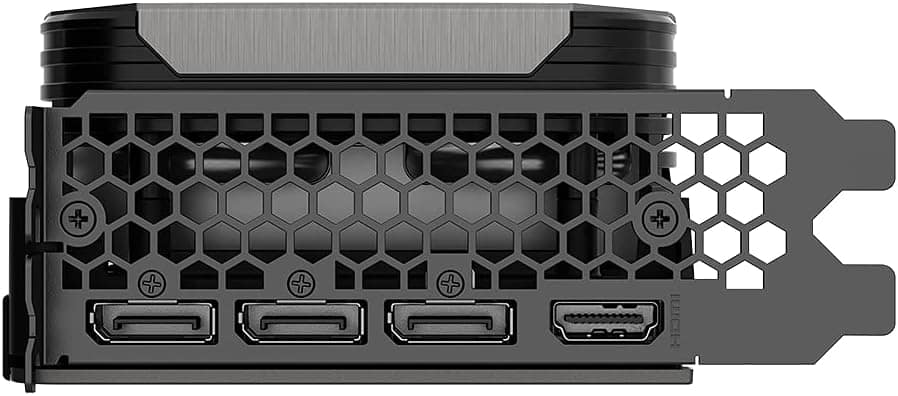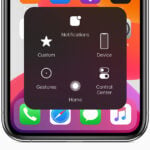DisplayPort and HDMI are two popular options for connecting monitors to computers. Both can deliver high-quality video and audio, but they have some key differences. DisplayPort often supports higher resolutions and refresh rates than HDMI, making it better for gaming and professional graphics work.
These two connection types have evolved over time. The latest versions, DisplayPort 2.1 and HDMI 2.1, offer improved features like higher bandwidths and variable refresh rates. This means smoother visuals and less screen tearing in fast-paced games.
Choosing between DisplayPort and HDMI depends on your needs. HDMI is more common on TVs and consumer devices, while DisplayPort is found more on high-end monitors and graphics cards. For most users, either option will work well for everyday tasks. Gamers and professionals may prefer DisplayPort for its extra performance in some cases.
Understanding the Nuances
While both DisplayPort and HDMI serve the fundamental purpose of transmitting high-definition video and audio signals, their underlying technologies and design philosophies lead to distinct advantages and disadvantages in various applications. Understanding these differences is crucial for making informed decisions about which interface best suits your needs.
The Genesis and Design Philosophy
HDMI, or High-Definition Multimedia Interface, was conceived primarily for the consumer electronics market. Its development was a collaborative effort by major industry players with the goal of creating a single, user-friendly connection standard for televisions, DVD players, and game consoles. This focus on simplicity and broad compatibility is reflected in its ubiquitous presence in living rooms worldwide.
DisplayPort, on the other hand, emerged from the personal computer industry, spearheaded by the Video Electronics Standards Association (VESA). Its design prioritized higher bandwidth capabilities, greater flexibility, and lower implementation costs for manufacturers. This PC-centric origin explains its prevalence in computer monitors, graphics cards, and laptops.
Bandwidth and Resolution Capabilities: The Numbers Game
In the realm of digital displays, bandwidth is king. It dictates the maximum resolution, refresh rate, and color depth that can be transmitted. Historically, DisplayPort has often held a bandwidth advantage over comparable HDMI versions. This has allowed DisplayPort to be at the forefront of supporting cutting-edge display technologies like ultra-high refresh rates for smoother gaming and higher resolutions like 4K and 8K at demanding refresh rates.
While HDMI has consistently evolved to close this gap with newer versions boasting significantly increased bandwidth, DisplayPort often maintains a slight edge, particularly when considering the theoretical limits of each standard. This difference can be critical for users pushing the boundaries of display technology.
Feature Sets and Functionality: Beyond Pixels
Beyond raw bandwidth, both interfaces offer a range of features that enhance the user experience. HDMI has long supported features like Audio Return Channel (ARC) and its enhanced version (eARC), simplifying audio connections between TVs and soundbars. Consumer Electronics Control (CEC) allows for the control of multiple HDMI-connected devices with a single remote. These features contribute to the integrated home entertainment ecosystem that HDMI was designed for.
DisplayPort, while also supporting audio transmission, has focused on features beneficial for computer users. Multi-Stream Transport (MST) allows a single DisplayPort connection to drive multiple independent displays, a boon for productivity. Its robust support for variable refresh rate technologies like AMD FreeSync and Adaptive-Sync (often branded as FreeSync on HDMI) has made it a favorite among gamers seeking tear-free and smooth visuals.
Connectors and Cables: Practical Considerations
The physical connectors themselves also present differences. The standard HDMI connector is a relatively compact and keyed design, making it easy to plug in correctly. However, its friction-based retention mechanism can sometimes lead to accidental disconnections. Mini and Micro HDMI connectors cater to smaller devices.
DisplayPort utilizes a connector with a locking mechanism, providing a more secure connection, particularly useful in environments where movement is possible. While a full-sized DisplayPort connector is common on desktops and larger laptops, Mini and even USB-C based DisplayPort Alternate Mode offer connectivity on smaller devices. The robustness of the DisplayPort connector is often appreciated by users who frequently connect and disconnect devices.
Licensing and Cost: Impact on Adoption
A significant difference lies in their licensing models. HDMI licensing involves fees for manufacturers implementing the technology, which can indirectly impact the cost of devices. DisplayPort, on the other hand, has a royalty-free licensing structure, potentially contributing to its lower implementation cost for manufacturers, especially in the PC space. This difference in licensing has likely played a role in the prevalence of each interface in their respective target markets.
The Future Landscape: Convergence and Evolution
Both DisplayPort and HDMI continue to evolve, with newer versions constantly pushing the boundaries of what’s possible in display technology. HDMI 2.1 and beyond are bringing significantly higher bandwidth and advanced features to compete with the latest DisplayPort standards. Similarly, DisplayPort continues to innovate, focusing on even greater bandwidth and seamless integration with emerging technologies.
Ultimately, the “best” interface depends on the specific application and user needs. For home entertainment systems centered around televisions and media devices, HDMI remains the dominant and often most convenient choice. For computer users, especially gamers and professionals requiring high resolutions, refresh rates, and multi-display setups, DisplayPort often offers a compelling advantage. As technology advances, the lines may continue to blur, but understanding the core strengths of each interface will empower you to make the optimal connection.
Key Takeaways
- DisplayPort often has higher resolution and refresh rate limits than HDMI
- HDMI is more common on TVs, while DisplayPort is found on many high-end monitors
- Both can work well for everyday use, but DisplayPort may be better for gaming and graphics work
Technical Specifications and Performance
DisplayPort and HDMI differ in their capabilities for resolution, refresh rates, and bandwidth. These factors impact the quality and performance of video and audio output.
Resolution and Refresh Rates
DisplayPort 1.4 supports 8K resolution at 60Hz and 4K at 120Hz. HDMI 2.1 can handle 8K at 60Hz and 4K at 120Hz too. Both can show 1080p content at high refresh rates like 240Hz.
DisplayPort 2.1 goes even further. It can output 4K at 240Hz or 8K at 120Hz. This makes it great for gaming and high-end displays.
HDMI 2.0, an older version, maxes out at 4K 60Hz. It’s still common in many TVs and monitors.
Bandwidth Capabilities
Bandwidth affects how much data can be sent through a cable. More bandwidth means higher resolutions and refresh rates.
DisplayPort 1.4 offers up to 32.4 Gbps of bandwidth. HDMI 2.0 provides 18 Gbps. HDMI 2.1 jumps to 48 Gbps.
DisplayPort 2.1 takes the lead with a massive 80 Gbps. This extra bandwidth allows for better color depth and more features.
Version Comparisons
DisplayPort and HDMI have gone through several versions. Each update brings new features and better performance.
DisplayPort versions:
- 1.2: 4K at 60Hz
- 1.4: 8K at 60Hz, HDR support
- 2.0/2.1: 8K at 120Hz, 16K with compression
HDMI versions:
- 1.4: 4K at 30Hz
- 2.0: 4K at 60Hz
- 2.1: 8K at 60Hz, Dynamic HDR
Newer versions are backward compatible. This means old cables often work with new devices, but may not support all new features.
Compatibility and Use Cases
HDMI and DisplayPort work with many devices. Each has strengths for different uses. Let’s look at how they compare for gaming, work, and home entertainment.
Gaming and Entertainment
DisplayPort is great for gaming on PCs. It supports high frame rates and resolutions. Many gaming monitors use DisplayPort. HDMI is common on TVs and consoles. It’s good for 4K gaming at 60Hz.
New HDMI 2.1 cables can do 4K at 120Hz. This is good for PS5 and Xbox Series X. But not all TVs support the full HDMI 2.1 features yet.
For PC gaming, DisplayPort often gives more options. It works with more graphics cards and high-end monitors.
Professional and Home Use
DisplayPort is popular for office computers. It can connect multiple monitors easily. This is helpful for tasks like photo editing or coding.
HDMI is found on most TVs and home theater gear. It’s the go-to for living room setups. HDMI cables can carry audio and video on one wire.
For work, DisplayPort’s Multi-Stream Transport lets you daisy-chain monitors. This means fewer cables on your desk.
Support for VRR and Synchronization Technologies
Both HDMI and DisplayPort can use Variable Refresh Rate (VRR). This makes games look smoother.
DisplayPort works with FreeSync and G-Sync. These are AMD and NVIDIA’s VRR tech. HDMI 2.1 added VRR support too.
For gaming PCs, DisplayPort is often better for VRR. It works with more monitors and graphics cards. HDMI VRR is catching up, but it’s not as widely used yet.







